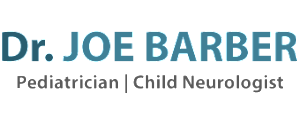The Ballerina
Happiness comes from being willing and able to connect with others.
I walked into the exam room and the first thing I saw was a six year old girl wearing tights, ballet slippers and a pink tutu. Her hair festooned with a pink ribbon and pink barrettes was pulled back into a pony tail. Smiling, I said to her: “You look beautiful today!” She raised her arms and did a pirouette. “We must go dancing together.” I said to her. She ran over and gave me a hug. Her mother smiled and said: “She was so excited last year when you asked about her dance lessons and talked about how much you love to dance. When she came downstairs this morning she had her dance outfit on and here we are.”
Sitting on my stool I tapped her arm. “We must go ballroom dancing together.” She furrowed her brow. “But I don’t know how to ballroom dance.” “Don’t worry.” I replied. “I will teach you how to ballroom dance and you can teach me one of your dances.” She turned to her mother. “Dr. Barber and I are going to go ballroom dancing together!” We all smiled.
Connecting with others provides opportunities for happiness in our lives. It allows us to develop relationships and make new friends who enrich and inspire us. Relationships are nourished by the willingness, capacity and capability to connect. Children need to be taught these skills. Parents are their greatest teacher. The interest in others that these relationships engender inspires within your child a sense of community. By not becoming a fearful parent you are providing your child the freedom and opportunity to connect.
The behaviors you model are a powerful influence in your child’s willingness to reach out to others. Parents who are anxious and fearful of others teach their child the world is filled with danger. Parents who believe the world is filled with caring people who wish to help others influence their children to believe the same. Restricting your child’s life with suspicion and fear provokes unnecessary anxiety and limits your child’s willingness to reach out to others. This type of overprotective parenting leads to excessive attachment, separation problems and a lack of willingness to explore the world. Fear is both contagious and frightening. It prevents your child from developing relationships that may last a lifetime.
Parents are confronted every day with fears arising from media headlines. Such fear affects not only your responses but also your child’s ability and desire to choose. Your child must be informed and counseled about real risks and real dangers but not blinded by the extreme responses caused by fear. When a child is led by fear relationship opportunities are lost.
When this six year old reached out to me her freedom and willingness to connect inspired me. I hope your child will do the same for you today.
